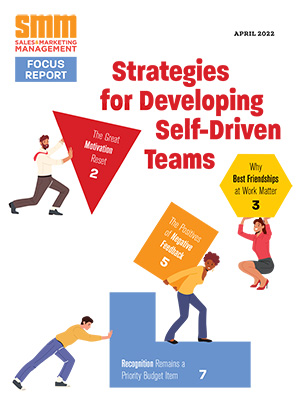The cost of replacing a lost customer is the fish tale of marketing — the number gets bigger and bigger every time the story is shared. A quick online search turns up everything from six times the cost of retaining a current customer to 30 times the cost.
While it may be impossible to determine the true cost, it’s safe to state that an analysis of top-performing companies across all industries would reveal the majority have lower churn rates than their competitors. You can’t focus on providing stellar service and top‑notch products if you’re energy is constantly devoted to acquiring new clients.
This explains the business world’s enamor with the subscription business model. As Forbes magazine states in a recent feature on Zuora, a maker of business software that allows companies of all kinds to sell their products by subscription, “In recent years, one company after another has embraced the ‘subscription economy,’ signing up customers online to long-term contracts that generate the business owner’s holy grail: recurring revenue.”
Subscriptions in the B2B world
Examples of traditional subscription businesses include newspapers, magazines and cable television. Notable subscription stalwarts of recent years include Netflix, Blue Apron (a food delivery service) and Dollar Shave Club. To be sure, the model is more predominant among consumer goods and services businesses, but B2B companies are determined not to be left out.
On the B2B side, the subscription model is most often linked to the booming software as a service (SaaS) industry that is dominated by behemoths such as Google, Amazon and Salesforce. But those who think the subscription model doesn’t suit their B2B customers may not be thinking creatively enough, says John Warrillow, author of “The Automatic Customer: Creating A Subscription Business In Any Industry.”
“Part of the goal of the book is to say, actually, hang on a minute. You could create a subscription in virtually any business and any industry,” Warrilow told SuperFastBusiness, an online hub of entrepreneurial coaching and services.
In the B2B world, the subscription model has been successfully deployed by companies that provide everything from graphic art to search engine optimization. The obvious value is a predictable revenue stream — predictable, that is, if you can maintain a low churn rate. When you can bank on recurring revenue, it becomes easier to invest in growth.
The benefits of the subscription model
As a recent Business Insider article points out, subscriptions allow businesses to interact with consumers on a regular basis, determine what services they are using and, most importantly, predict their customers’ needs. This data can then be used for further cross-selling or marketing.
Warrilow says a less-obvious benefit of the subscription model may be one of the most important. “It forces you to ‘productize’ your business,” he told author John Jantsch in a podcast interview available at DuctTapeMarketing.com. “You can’t just say we do SEO consulting or graphic design — hire us. When you create a subscription, you have to create the bullets that say, ‘This is what you get with your subscription.’ That productization process just makes you a much more scalable business.”
There’s an additional benefit to the subscription model that is particularly important for small and medium-sized businesses, especially if they are interested in eventually being purchased by a larger company. “I think the most compelling reason for creating recurring revenue is that it proves the value of your business,” Warrilow says, adding that in some cases it can increase a company’s value by two or three times.
And Jantsch points out that a subscription model often serves as entrée to provide a client more expensive (and profitable) products or services that come up over the course of a business relationship. Even if the subscription revenue is negligible to your bottom line, it can help you establish trust with a large roster of clients.
Making the switch
The transition to a subscription model can be challenging and requires some investment. The business of managing subscriptions is more complicated than it may seem, the Forbes story on Zuora reports. Businesses need complex yet flexible software to package and price their offerings and to acquire customers.
Not surprisingly, the most important metric to monitor is churn rate — how many clients are cancelling subscriptions. Warrilow says few of the old school methods of measuring success will carry over. “We all grew up using a profit and loss statement as our report card. In a subscription business, you need to use a different set of measuring sticks.”
A key ratio to compute is the lifetime customer value to the cost of acquiring that customer (LCV to cap). Warrilow says most professional investors are looking for a minimum LCV to cap ratio of 3 to 1. Determining that ratio provides your marketing team with a guide for how much it can spend to acquire a new customer. “The rule of thumb on LCV to cap is if you’re north of 3 to 1, invest heavily. If you’re below 3 to 1, that’s a warning that you should take your foot off the marketing and sales pedal and retool,” says Warrilow.



